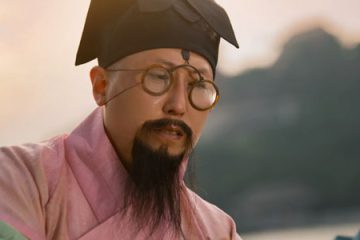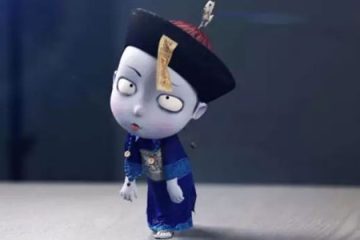What You Missed on the Spring Festival Gala—Now Catch It in Historical Dramas!

In the historical drama In the Name of Blossom, a party scene unexpectedly features a live acrobatic performance. That spinning object—could it be a yo-yo? Let Silkdivas walk you through the story behind this unique traditional sport!
Last year’s Spring Festival Gala featured a program called Jin Xiu, celebrating the beauty of traditional chinese clothing. And now, in In the Name of Blossom, we’re thrilled to see an actual 14-second live acrobatic act that’s absolutely stunning. It really makes you wonder—are we witnessing a cultural renaissance in Chinese performing arts?
Ⅰ. What kind of sport is this?
This traditional activity is known as dou kongzhu (抖空竹), also called the Chinese yo-yo. It’s a centuries-old folk game and a part of China’s intangible cultural heritage. According to the General Records of Chinese Culture, a type of acrobatics from the Song Dynasty called nong dou (弄斗, literally play it) is considered an early form of this game. References to it can be found in classic Song texts like Dongjing Meng Hua Lu and Reminiscences of Wulin.

In the Ming Dynasty edition of Water Margin, Song Jiang’s poem describes the scene vividly:
“One tone low, one tone high, its bright sound piercing the sky”
—referring to the humming of a spinning kongzhu. There’s even a Yuan Dynasty poem by Ma Yu that mentions it as a leisure pastime after a drink.
All this points to the game having at least a 900-year history in China.
To put it simply, I actually grew up with kongzhu (Chinese yo-yo). My grandmother taught me how to play when I was little. The one I used wasn’t fancy—it was made of green plastic and not very well-balanced, and honestly, I wasn’t very good at it. But even then, I was struck by how beautiful and fun the motion was. That feeling has stayed with me ever since. 😚

Ⅱ. Where Did Kongzhu Come From?
Kongzhu originated from traditional Han Chinese spinning tops. Over time, the design evolved—switching to bamboo materials and adding holes to create a whistling sound as it spins, which is why it’s also known as the “whistling top.”
Its structure is pretty unique: a wooden axle in the center, with discs on either side—either single or double. The edges of the discs have small and large holes. Larger holes create deeper, lower tones, while smaller ones make higher-pitched sounds. Some versions can have up to 36 holes! When spun, they all whistle together, producing a bright, far-reaching sound that’s hard to forget.

This traditional game was already popular in Bianliang (modern-day Kaifeng, Henan) during the Northern Song Dynasty. Before the Qing Dynasty, it was also known as Hu Qiao (胡敲 in Chinese), and over time, different styles and names developed. In 2006, kongzhu (Chinese yo-yo) was officially recognized as part of China’s first group of national-level intangible cultural heritage.
According to historical records like the Dijing Jingwulue from the Ming Dynasty and archaeological findings, this folk activity has been passed down for over 600 years.
Ⅲ. More Fun Facts
Kongzhu isn’t just a form of entertainment—it also promotes fitness, can be highly competitive, and is often used in performance art. Today, there are over 100 different tricks and techniques, ranging from solo routines to complex team performances. As a hallmark of Chinese acrobatics, kongzhu has earned international acclaim. As early as 1986, it won the Gold Medal at the “Tomorrow’s Acrobatic Festival” in France.
You might also notice performers wearing a traditional tiger-head hat. These adorable hats actually date back to the Tang Dynasty, though they didn’t become widespread until the early 20th century. During that time of war and instability, child mortality was high, and families began dressing children in tiger-head hats, hoping the symbolic power of the tiger would ward off evil and protect them.
In fact, you’ll spot a cute tiger-head hat in some of our hanfu product photos—like the Koi Springtide set—blending tradition with charm!


These traditional accessories reflect the ancient belief in auspicious creatures and people’s longing for peace and happiness. In Chinese culture, mythical beasts like the tiger symbolize good fortune, protection, and well-being. The popularity of the tiger-head hat is a vivid expression of this cultural mindset.
Summary
If you’re curious, check out Episode 4 of In the Name of Blossom—this scene has been getting lots of love online! Many viewers said it looked amazing. The show’s dance and music coaches are clearly top-tier. 👏
Incorporating traditional intangible cultural heritage into film and TV not only helps promote Chinese culture but also benefits international audiences who are curious about Chinese hanfu and Chinese traditions. At SilkDivas, we’re excited to see more of this beautiful fusion of art and culture—and we’d love to hear your thoughts in the comments!



0 Comments